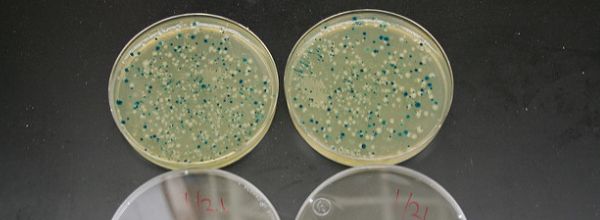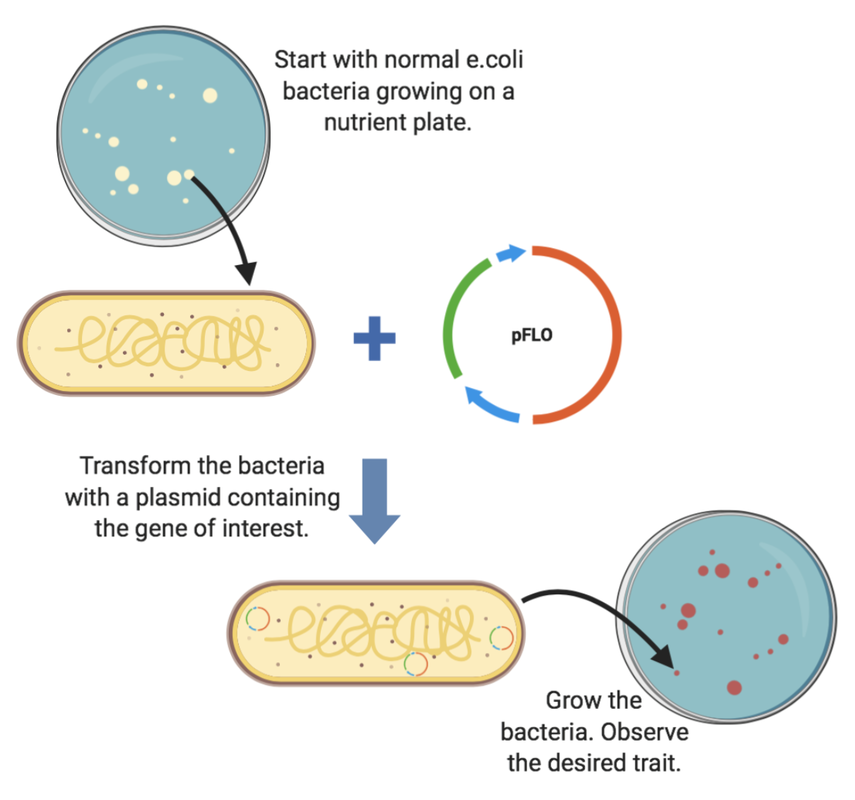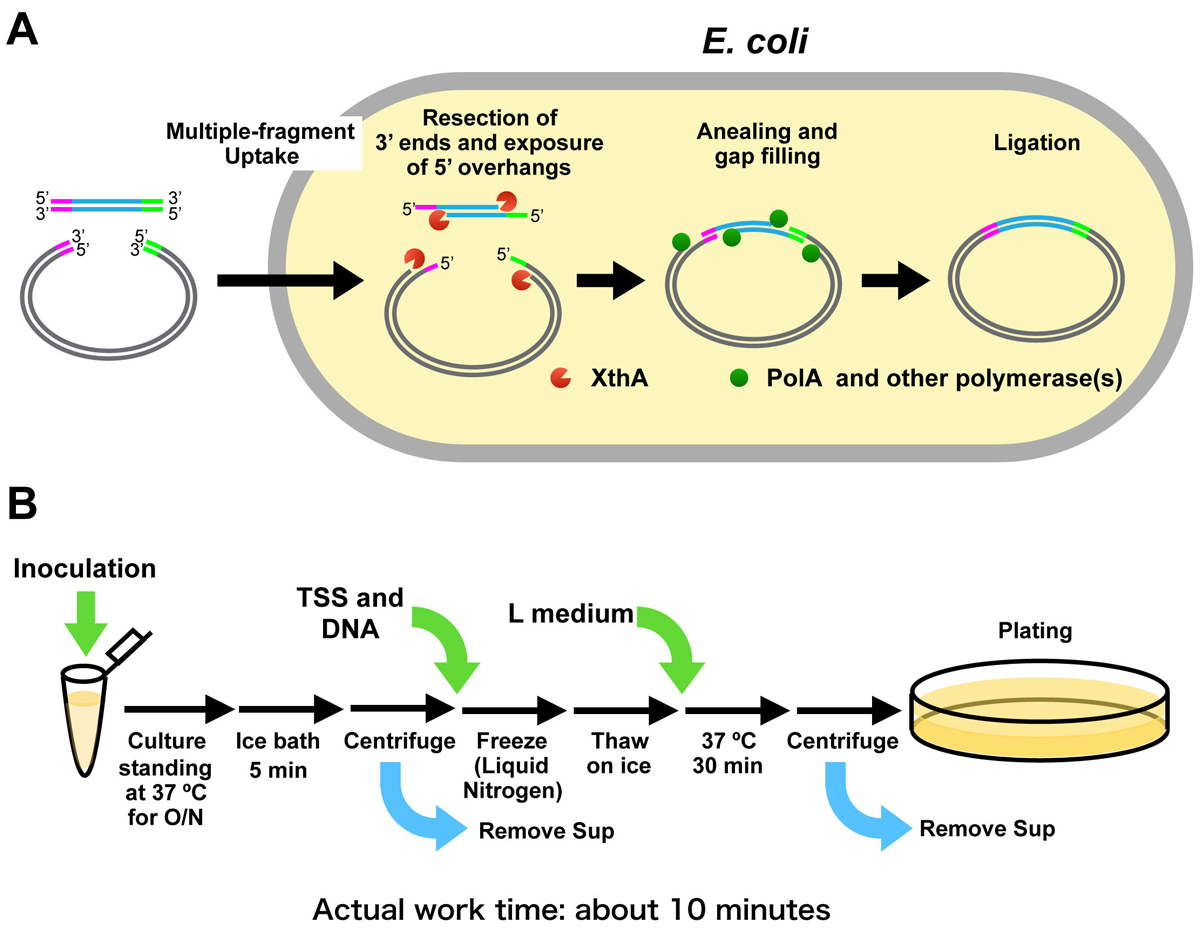Escherichia coli transformation
Home » » Escherichia coli transformationYour Escherichia coli transformation images are available in this site. Escherichia coli transformation are a topic that is being searched for and liked by netizens today. You can Get the Escherichia coli transformation files here. Get all free images.
If you’re looking for escherichia coli transformation images information related to the escherichia coli transformation topic, you have pay a visit to the ideal site. Our website frequently gives you suggestions for seeing the maximum quality video and image content, please kindly surf and locate more enlightening video articles and graphics that match your interests.
Escherichia Coli Transformation. We constructed several recombinant Escherichia coli strains to transform phosphoenolpyruvate. We knocked-out the key genes ptsI and ptsG in PTS system by using Red homologous recombination in E. The goal of the experiment is to transform E. Coli cells which has little natural competence of foreign DNA without electroporation treatment and got transformants with simple and quick treatment by a plasmid or a transposon and transposase complex.
 Stable Transformation Of The Green Algae Acutodesmus Obliquus And Neochloris Oleoabundans Based On E Coli Conjugation Sciencedirect From sciencedirect.com
Stable Transformation Of The Green Algae Acutodesmus Obliquus And Neochloris Oleoabundans Based On E Coli Conjugation Sciencedirect From sciencedirect.com
Plasmid is a circular DNA existing outside the main bacterial chromosomes which acts as a vector. There are two types of transformation natural and artificial transformation. However several recent reports have shown that E. A novel type of natural transformation involving cell-derived DNA and a putative promoting pheromone. The bacteria are transformed by a combination of calcium chloride and heat shock. Cells DH5 JM109 and HB101 prepared by SEM are extremely competent for transformation 13 10 9 cfuμg of pBR322 DNA and can be stored in liquid nitrogen for at least 40 days without loss of competence.
Cell-to-cell transformation in Escherichia coli.
Escherichia coli do not have nuclear envelope surrounding the bacterial chromosome and also contains plasmids which are required in the process of transformation Sinha Redfield 2012. This bacterium is not generally recognized as naturally transformable. The basic experiment leads to the formation of green fluorescent colonies of Escherichia coli and can be extended to illustrate the specificity of the interaction between sugars and the AraC protein the phenomenon of carbon catabolite repression the substrate specificity of the β-lactamase encoded by the plasmid and the role of host restrictionmodification systems in the transformation. Transformation could occur naturally in some bacteria such as Escherichia coli. Escherichia coli do not have nuclear envelope surrounding the bacterial chromosome and also contains plasmids which are required in the process of transformation Sinha Redfield 2012. Unlike electroporation transformation using these competent cells is affected minimally by salts in DNA preparation.
 Source: thermofisher.com
Source: thermofisher.com
Cells DH5 JM109 and HB101 prepared by SEM are extremely competent for transformation 13 10 9 cfuμg of pBR322 DNA and can be stored in liquid nitrogen for at least 40 days without loss of competence. The basic experiment leads to the formation of green fluorescent colonies of Escherichia coli and can be extended to illustrate the specificity of the interaction between sugars and the AraC protein the phenomenon of carbon catabolite repression the substrate specificity of the β-lactamase encoded by the plasmid and the role of host restrictionmodification systems in the transformation. Coli can incorporate extracellular plasmids into cytoplasm naturally at low frequencies. Plasmid is a circular DNA existing outside the main bacterial chromosomes which acts as a vector. The goal of the experiment is to transform E.
 Source: bitesizebio.com
Source: bitesizebio.com
The bacteria are transformed by a combination of calcium chloride and heat shock. AlthoughEscherichia coli does not have a natural transformation process strains ofE. A standard method was developed in which stationary phase cells were concentrated mixed with plasmids and then plated on agar plates with nutrients which allowed cells to grow. Transformation of Escherichia coli Exercise 9 Experiment Goals. We constructed several recombinant Escherichia coli strains to transform phosphoenolpyruvate.
 Source: goldbio.com
Source: goldbio.com
However several past studies have demonstrated that laboratory and natural strains of E. Coli can express modest genetic competence in certain conditions that may arise in. Cell-to-cell transformation in Escherichia coli. Transformation could occur naturally in some bacteria such as Escherichia coli. Unlike electroporation transformation using these competent cells is affected minimally by salts in DNA preparation.
 Source: thermofisher.com
Source: thermofisher.com
We have shown previously that spontaneous lateral transfer of non-conjugative plasmids occurs in a colony biofilm of mixed E. Coli can express modest genetic competence in certain conditions that may arise in. Transformation offrozen competentcells Prepnstage CFUMla Relative viabil-Potentialb Drug-resistant ity transformants transformantse Exponentially growingculture 56 x 10 10 Calciumtreated andconcentrated 20-fold 34 x 10 029 Frozento -82C thawedat 00C 37 x 109 031 Transformedd and incubated in 100 vol-umesofLbroth for. We knocked-out the key genes ptsI and ptsG in PTS system by using Red homologous recombination in E. Carbohydrate phosphotransferase system PTS system and compared the characteristics of growth and metabolism of the mutants.
 Source: funpecrp.com.br
Source: funpecrp.com.br
In is experiment foreign DNA is inserted into Escherichia coli in order to alter its phenotype. However several recent reports have shown that E. Cells DH5 JM109 and HB101 prepared by SEM are extremely competent for transformation 13 10 9 cfuμg of pBR322 DNA and can be stored in liquid nitrogen for at least 40 days without loss of competence. Coli DH5α cells were cultured on either LuriaBertani LB medium containing ampicillin or kanamycin. Cerevisiae was assayed by using competent cells of E.
 Source: hcrowder.com
Source: hcrowder.com
Escherichia coli do not have nuclear envelope surrounding the bacterial chromosome and also contains plasmids which are required in the process of transformation Sinha Redfield 2012. Escherichia coli is not assumed to be naturally transformable. We have shown previously that spontaneous lateral transfer of non-conjugative plasmids occurs in a colony biofilm of mixed E. Transformation of E. Carbohydrate phosphotransferase system PTS system and compared the characteristics of growth and metabolism of the mutants.
 Source: bio.libretexts.org
Source: bio.libretexts.org
We have shown previously that spontaneous lateral transfer of non-conjugative plasmids occurs in a colony biofilm of mixed E. Coli can express modest genetic competence in certain conditions that may arise in. This bacterium is not generally recognized as naturally transformable. We knocked-out the key genes ptsI and ptsG in PTS system by using Red homologous recombination in E. However several past studies have demonstrated that laboratory and natural strains of E.
 Source: apsnet.org
Source: apsnet.org
Coli can express modest natural competence under feasible environmental conditions. Transformation experiments with Escherichia coli recipient cells and linear chromosomaldeoxyribonucleic acid DNAarereported. Transformation of Escherichia coli Exercise 9 Experiment Goals. Coli can express modest genetic competence in certain conditions that may arise in its environment. Cell-to-cell transformation in Escherichia coli.
 Source: goldbio.com
Source: goldbio.com
Natural transformation happen when bacteria cells take in DNA naturally through the cell membrane whereas artificial transformation occurs when the recipient cells are forced to take in DNA by chemical or enzymatic treatment Lorenz Wackernagel. The basic experiment leads to the formation of green fluorescent colonies of Escherichia coli and can be extended to illustrate the specificity of the interaction between sugars and the AraC protein the phenomenon of carbon catabolite repression the substrate specificity of the β-lactamase encoded by the plasmid and the role of host restrictionmodification systems in the transformation. Transformation offrozen competentcells Prepnstage CFUMla Relative viabil-Potentialb Drug-resistant ity transformants transformantse Exponentially growingculture 56 x 10 10 Calciumtreated andconcentrated 20-fold 34 x 10 029 Frozento -82C thawedat 00C 37 x 109 031 Transformedd and incubated in 100 vol-umesofLbroth for. However several past studies have demonstrated that laboratory and natural strains of E. In this experiment we used the principle of transformation to introduce endogenous plasmid DNA pUC19 and pKAN to competent Escherichia coli DH5α cells.
 Source: goldbio.com
Source: goldbio.com
Coli DH5α prepared by the following two procedures. Coli can express modest genetic competence in certain conditions that may arise in its environment. The goal of the experiment is to transform E. Escherichia coli do not have nuclear envelope surrounding the bacterial chromosome and also contains plasmids which are required in the process of transformation Sinha Redfield 2012. Escherichia coli is not assumed to be naturally transformable.
 Source: mikeblaber.org
Source: mikeblaber.org
Coli DH5α prepared by the following two procedures. Cerevisiae was assayed by using competent cells of E. Transformation experiments with Escherichia coli recipient cells and linear chromosomaldeoxyribonucleic acid DNAarereported. Coli cells which has little natural competence of foreign DNA without electroporation treatment and got transformants with simple and quick treatment by a plasmid or a transposon and transposase complex. Transformation offrozen competentcells Prepnstage CFUMla Relative viabil-Potentialb Drug-resistant ity transformants transformantse Exponentially growingculture 56 x 10 10 Calciumtreated andconcentrated 20-fold 34 x 10 029 Frozento -82C thawedat 00C 37 x 109 031 Transformedd and incubated in 100 vol-umesofLbroth for.
 Source: goldbio.com
Source: goldbio.com
A standard method was developed in which stationary phase cells were concentrated mixed with plasmids and then plated on agar plates with nutrients which allowed cells to grow. Coli can express modest genetic competence in certain conditions that may arise in. In is experiment foreign DNA is inserted into Escherichia coli in order to alter its phenotype. Natural transformation happen when bacteria cells take in DNA naturally through the cell membrane whereas artificial transformation occurs when the recipient cells are forced to take in DNA by chemical or enzymatic treatment Lorenz Wackernagel. Transformation of E.
 Source: nig.ac.jp
Source: nig.ac.jp
There are two types of transformation natural and artificial transformation. Coli cells which has little natural competence of foreign DNA without electroporation treatment and got transformants with simple and quick treatment by a plasmid or a transposon and transposase complex. Coli can express modest natural competence under feasible environmental conditions. Cells DH5 JM109 and HB101 prepared by SEM are extremely competent for transformation 13 10 9 cfuμg of pBR322 DNA and can be stored in liquid nitrogen for at least 40 days without loss of competence. Escherichia coli is not assumed to be naturally transformable.
 Source: thermofisher.com
Source: thermofisher.com
Coli can express modest natural competence under feasible environmental conditions. Coli with pGLO plasmid which carries a gene for ampicillin resistance and determine the transformation efficiency. Cell-to-cell transformation in Escherichia coli. Coli can express modest genetic competence in certain conditions that may arise in its environment. However several past studies have demonstrated that laboratory and natural strains of E.
 Source: pnas.org
Source: pnas.org
Cells DH5 JM109 and HB101 prepared by SEM are extremely competent for transformation 13 10 9 cfuμg of pBR322 DNA and can be stored in liquid nitrogen for at least 40 days without loss of competence. Coli can express modest genetic competence in certain conditions that may arise in. Coli can express modest genetic competence in certain conditions that may arise in its environment. Transformation offrozen competentcells Prepnstage CFUMla Relative viabil-Potentialb Drug-resistant ity transformants transformantse Exponentially growingculture 56 x 10 10 Calciumtreated andconcentrated 20-fold 34 x 10 029 Frozento -82C thawedat 00C 37 x 109 031 Transformedd and incubated in 100 vol-umesofLbroth for. Transformation of Escherichia coli is a basic technique for genetic engineering.
 Source: apsnet.org
Source: apsnet.org
Escherichia coli do not have nuclear envelope surrounding the bacterial chromosome and also contains plasmids which are required in the process of transformation Sinha Redfield 2012. Transformation experiments with Escherichia coli recipient cells and linear chromosomaldeoxyribonucleic acid DNAarereported. Cerevisiae was assayed by using competent cells of E. Cell-to-cell transformation in Escherichia coli. However several past studies have demonstrated that laboratory and natural strains of E.
 Source: researchgate.net
Source: researchgate.net
Escherichia coli is not assumed to be naturally transformable. Transformation offrozen competentcells Prepnstage CFUMla Relative viabil-Potentialb Drug-resistant ity transformants transformantse Exponentially growingculture 56 x 10 10 Calciumtreated andconcentrated 20-fold 34 x 10 029 Frozento -82C thawedat 00C 37 x 109 031 Transformedd and incubated in 100 vol-umesofLbroth for. The bacteria are transformed by a combination of calcium chloride and heat shock. Natural transformation happen when bacteria cells take in DNA naturally through the cell membrane whereas artificial transformation occurs when the recipient cells are forced to take in DNA by chemical or enzymatic treatment Lorenz Wackernagel. Transformation experiments with Escherichia coli recipient cells and linear chromosomaldeoxyribonucleic acid DNAarereported.
 Source: sciencedirect.com
Source: sciencedirect.com
Transformation of Escherichia coli Exercise 9 Experiment Goals. However several recent reports have shown that E. The basic experiment leads to the formation of green fluorescent colonies of Escherichia coli and can be extended to illustrate the specificity of the interaction between sugars and the AraC protein the phenomenon of carbon catabolite repression the substrate specificity of the β-lactamase encoded by the plasmid and the role of host restrictionmodification systems in the transformation. Escherichia coli is not assumed to be naturally transformable. Escherichia coli do not have nuclear envelope surrounding the bacterial chromosome and also contains plasmids which are required in the process of transformation Sinha Redfield 2012.
This site is an open community for users to do submittion their favorite wallpapers on the internet, all images or pictures in this website are for personal wallpaper use only, it is stricly prohibited to use this wallpaper for commercial purposes, if you are the author and find this image is shared without your permission, please kindly raise a DMCA report to Us.
If you find this site beneficial, please support us by sharing this posts to your preference social media accounts like Facebook, Instagram and so on or you can also bookmark this blog page with the title escherichia coli transformation by using Ctrl + D for devices a laptop with a Windows operating system or Command + D for laptops with an Apple operating system. If you use a smartphone, you can also use the drawer menu of the browser you are using. Whether it’s a Windows, Mac, iOS or Android operating system, you will still be able to bookmark this website.